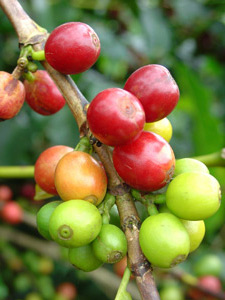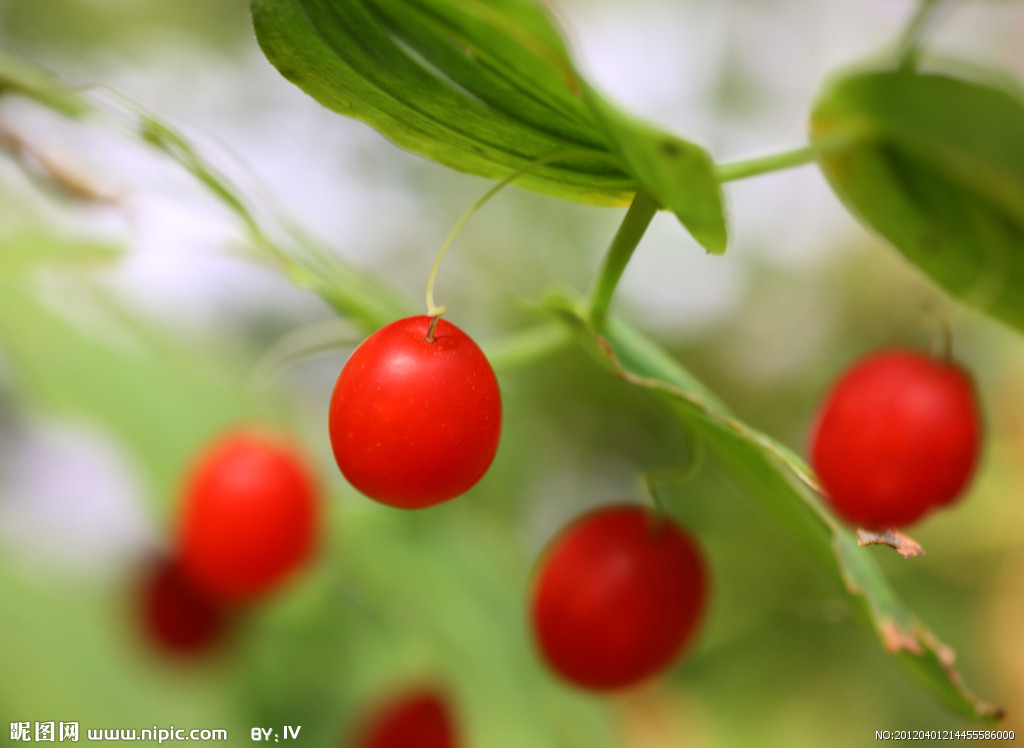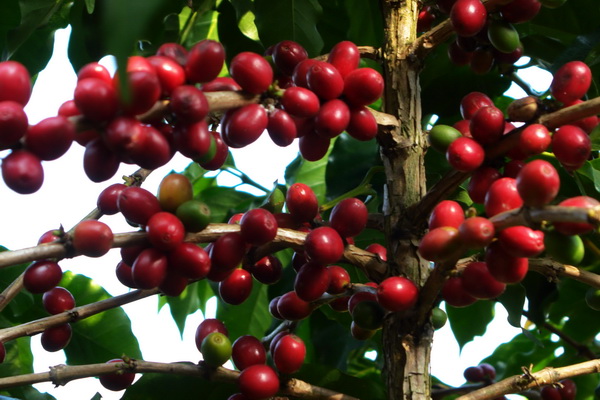Ethiopia Limu medium roast coffee beans fine coffee producing area
The coffee producing areas of Ethiopia are Hidamo, Harald and Sidamo, Harrar and Yirgacheffe. Sidamo and Harrar are provinces and divisions, Sidamo is located in the south of Ethiopia bordering Kenya, and Harrar is bordering Somalia in the east of Ethiopia. Although Yirgacheffe is a community in the Sidamo region, its coffee is considered to be the best in Ethiopia because of soil composition and water content.
Limu grows in the southern western highlands of Ethiopia (the border between Shewa and Sidmo provinces) east of Jima and north of West Dharma. it is preferred by most Europeans and Americans at an altitude of 3600-6200 feet. Its annual output is about 110000bags/60kg, and most of the beans are round (15/16scr). It is bluish in color and bluish in color, and the export is mostly G2 grade. It tastes like Yegashev, but its viscosity is thin. But the flower and fruit taste is obvious, the sour taste is softer than Yegashev, the more irritating acid, the aftertaste is similar to the wine, has a very good and balanced quality, this is more suitable for air flow medium baking, not suitable for deep baking, the better flavor after baking is two to three days. It is the only boutique coffee producing area in the west wall, with less output, mainly exported to European and American markets, and rare in Asia. There are three kinds of treatment: water washing, sun washing and semi-washing. For Europe and the United States, the ranking of water-washed Lim is second only to Yega Schiffe. The taste spectrum of Lim is different from that of Sidamo and Yega Schiffe, the consistency is obviously lower, and the performance of flower aroma and citrus acid is also lower than that of Yega and Cedamo, but there is a smell of grass and black sugar, and the fruit acid is bright.

Important Notice :
前街咖啡 FrontStreet Coffee has moved to new addredd:
FrontStreet Coffee Address: 315,Donghua East Road,GuangZhou
Tel:020 38364473
- Prev

Djimmah producing area Ethiopian boutique coffee beans African flavor coffee
Yega Chefe and Sidamo, which are famous for their bright sour taste, are famous for their charming and mixed fragrance, while the western half of the forest is covered with a large area of primeval forest, mostly in the process of complete natural evolution, creating a more complex variety of coffee. The coffee varieties in the Kafa forest in the southwest are extremely resistant to disease. Due to natural evolution and less manual screening, its overall flavor is slightly lower than that of the eastern half of the wall. The coffee producing areas of Ethiopia are
- Next

African flavor Ethiopian grade G1G2 G3 boutique coffee beans
Pre-auction process 1) farmers pick fresh coffee fruits; 2) farmers transport fresh fruits to rural cooperatives; 3) cooperatives sell fresh fruits to middlemen; 4) middlemen collect and transport fresh fruits to processing plants (washing or tanning process); 5) middlemen transport processed beans (with shell beans, Parchment Coffee) to auction houses to establish warehouses; 6) auction houses give official evaluation (
Related
- Detailed explanation of Jadeite planting Land in Panamanian Jadeite Manor introduction to the grading system of Jadeite competitive bidding, Red bid, Green bid and Rose Summer
- Story of Coffee planting in Brenka region of Costa Rica Stonehenge Manor anaerobic heavy honey treatment of flavor mouth
- What's on the barrel of Blue Mountain Coffee beans?
- Can American coffee also pull flowers? How to use hot American style to pull out a good-looking pattern?
- Can you make a cold extract with coffee beans? What is the right proportion for cold-extracted coffee formula?
- Indonesian PWN Gold Mandrine Coffee Origin Features Flavor How to Chong? Mandolin coffee is American.
- A brief introduction to the flavor characteristics of Brazilian yellow bourbon coffee beans
- What is the effect of different water quality on the flavor of cold-extracted coffee? What kind of water is best for brewing coffee?
- Why do you think of Rose Summer whenever you mention Panamanian coffee?
- Introduction to the characteristics of authentic blue mountain coffee bean producing areas? What is the CIB Coffee Authority in Jamaica?

